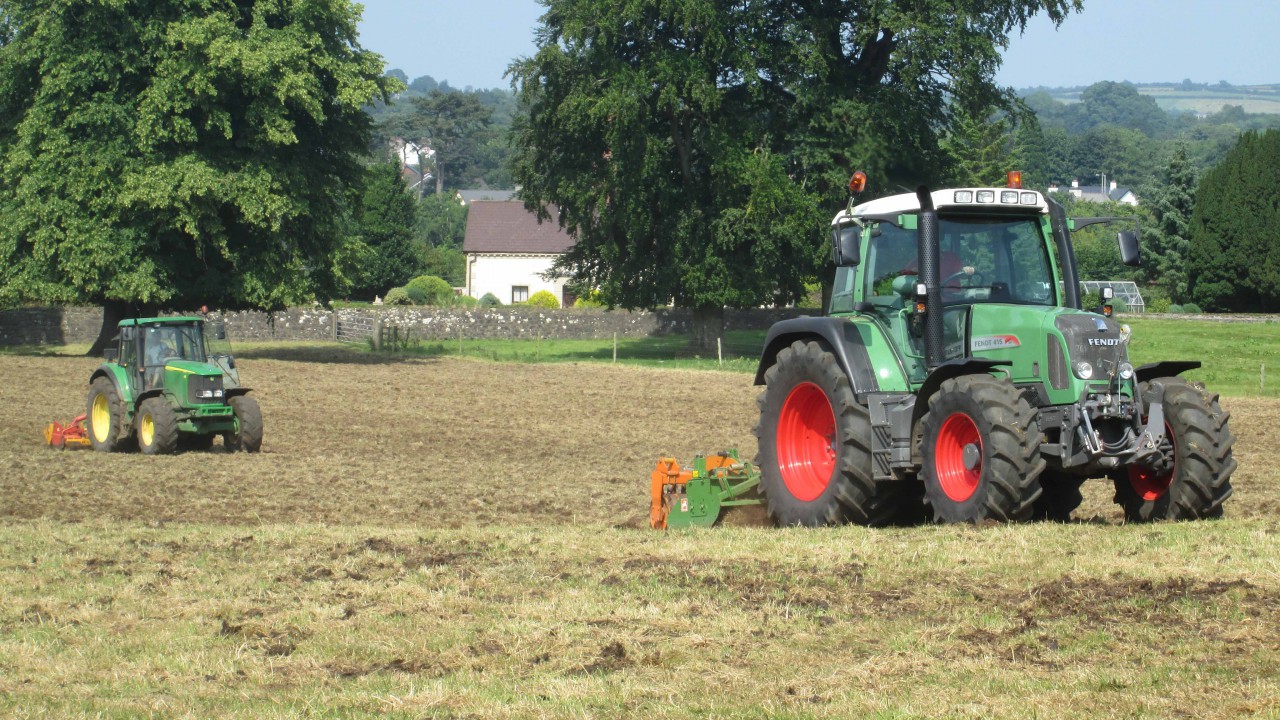Grass is the cheapest feed dairy farmers have access to, with grass production on farms having an impact on farm profitability.
Christopher Breen, a dairying adviser with the College of Agriculture Food and Rural Affairs (CAFRE), said: “It makes sense to maintain top quality grass swards through regular reseeding.This year has been exceptional so far for sward improvement, with prolonged dry periods.''“Many farmers have already taken the opportunity to reseed this summer or consider other less expensive forms of rejuvenation to improve productivity," he continued. ''Although only consider taking out swards for improvement where there is enough grass for herd demand during this current dry spell."
Drainage
Before you consider sward improvement, Christopher advises that the field's drainage should be assessed. A drainage system is designed to remove excess water from the soil; this improves conditions for root development and plant growth.Improving drainage will also allow newly sown grasses to persist for longer.
It will also help to make the land more manageable for the harvesting of crops, timeliness of cultivations, earlier turnout of livestock and improved yields. Christopher stated: “Are there any wet areas that perhaps need a drain or two, are there open drains that need to be cleaned out or is a more major drainage needed?”Soil analysis
Before reseeding, CAFRE advises that you should complete a soil analysis to establish nutrient status and the recommendations for fertiliser and lime. This is critical as a new sward requires a high nutrient status to establish and grow properly. Where soils are shown to be too acidic with pH less than 6.0, lime should be applied when reseeding. Based of the soil analysis further lime applications may be required at regular intervals.
Weed control
If not controlled, grassland weeds compete with grass for nutrients and light. This leads to reduce productivity of the sward.Not only does weed control increase the output of an existing sward, it is an essential prerequisite for a successful reseed.
Spraying of weeds should be completed when weather conditions are suitable, using an effective spray for targeted weeds.Cultivation techniques
Although ploughing and cultivation is the most expensive method of sward rejuvenation, it is still the most reliable method of establishing a new sward. It also relieves compaction in the topsoil and enables the levelling of uneven or badly poached ground.
These include the use of a slot seeding machines or over-seeding machines.
For slot seeding, the existing sward should be burnt off to eliminate competition for the new seeds while they are germinating. Alternatively grass seed can be incorporated immediately after a cut of silage before the existing sward has recovered.Where the grass sward is more open over-seeding is an option. This involves harrowing the existing sward to create a mini-tilth.
The grass seed is then broadcasted into this tilth and rolling is then recommended to provide good contact between soil and seed.Grass quality
According to CAFRE, varieties chosen should be suitable for the end use, whether this is silage production or grazing.For silage swards, cutting date should be considered, while for grazing swards turn-out date of stock should be a factor in variety selection.
Christopher continues: “A rejuvenated sward has the potential to produce a high yield of quality grass.Good soil fertility and weed control is essential. Ploughing is the most reliable method of reseeding and will improve uneven or compacted topsoil conditions.''Minimum cultivation techniques like slot seeding and over-seeding are less expensive, require less labour and provide a quicker growth response."

